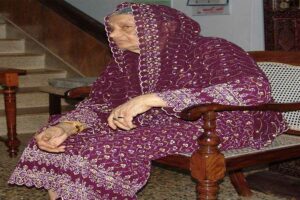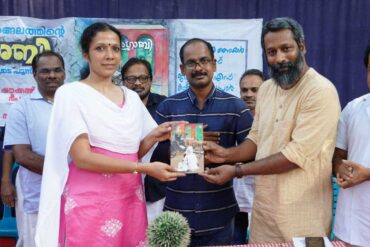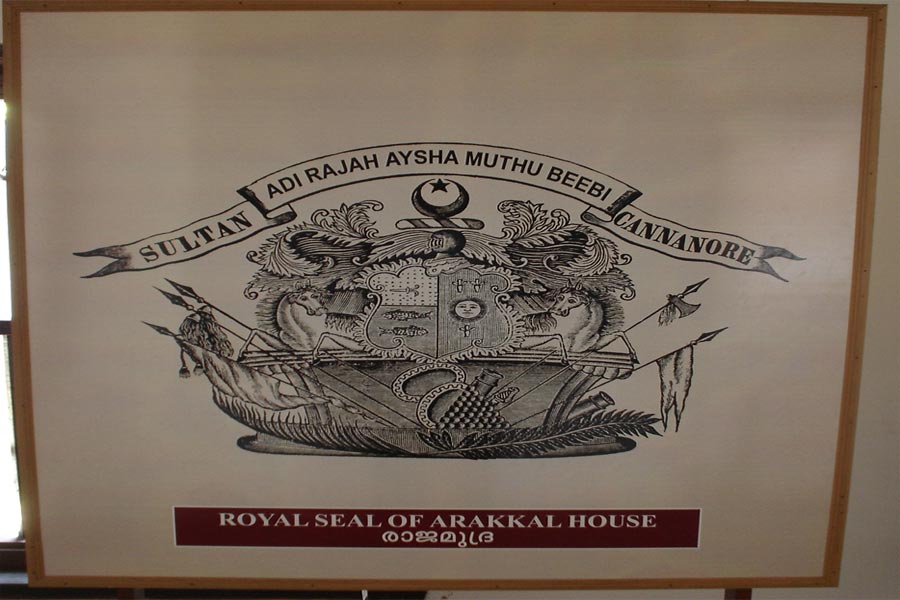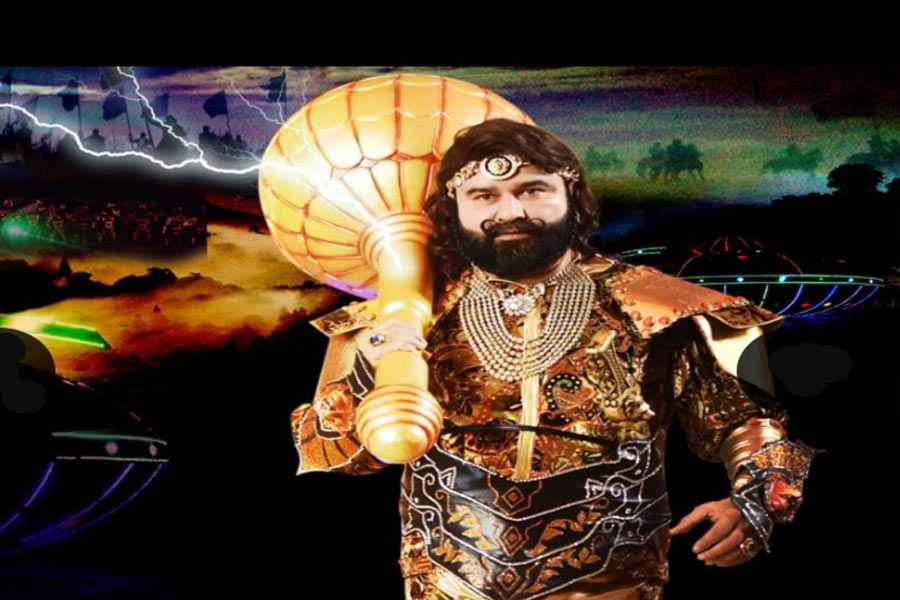Legend has it, that around 686 CE, an embassy from Mecca disembarked on the busy shores of Kerala. Arab merchants had, of course, been sailing here for centuries, but this particular mission had a unique purpose—it was charged with the conversion to Islam of an Indian prince. A few years previously, the Malayali king, Cheraman Perumal, had crossed the Arabian Sea, to become a Muslim. Now, it was for his nephew that this embassy came, so that he too could follow in the footsteps of his illustrious uncle. The name of the nephew, born from a royal sister, Sridevi, was Mahabali. And promptly after embracing the Prophet’s faith, he was reincarnated, styled hereafter (somewhat conveniently) as Mohammed Ali.
This is merely one of many legends that constructs for the Arakkal family of Kannur a place in Kerala’s antiquity. The region’s only Muslim royal house, and once rulers of the Lakshadweep Islands, Arakkal is distinguished also in following the matrilineal system of succession. It did not matter what the Shariat prescribed in such matters—matriliny, it is said, was another link the family retained to its Hindu origins. Cheraman Perumal, according to dynastic chronicles, instructed his sister to uphold tradition. Both her children, he commanded, “should be made to reign according to their seniority”. And so it was done—if the eldest child in any generation was male, he was the Adi Raja (or Ali Raja) of Arakkal; if it was a girl, she held the same title, with the extra style of “Beevi”.
From the age of the legendary Cheraman Perumal and the equally legendary Mohammed Ali, the Arakkal family claims 39 heads of the line, down to Adi Raja Fathima Muthu Beevi who died last week in Thalassery.

But the Perumal legend is not the only story that explains the origin of this Muslim principality. Certainly it is what the family celebrated, even maintaining in a room in their palace an eternal lamp in memory of their royal “uncle”. But considering how the Perumal was invoked by every half-ambitious ruling line in Kerala to invent legitimacy for itself, it is likely that this genealogy was divined in the 17th or 18th century, when Arakkal first rose from vassalage into a more assertive semi-independence. In other words, when power was shored up, need was also felt to cement it with legitimacy.
The result is that other tales also exist about the Arakkal dynasty’s roots. One colourful tale has a princess of the Kolathiri royal family (the official overlords of Arakkal) drowning. A Muslim man who happens to be passing by rescues her, but finding that her mundu is swept away, he drapes her in his own. She takes the garment at once, but by doing so also enacts the rite of marriage or sambandham, where a woman receives a present of cloth from a man to accept him as her husband. The result was that a fief is carved out for her by the Kolathiris, and converting to Islam, she launches the house of Arakkal. Yet another story—probably closest to the truth—simply explains how the family of a prominent nobleman, Arayankulangara Nair, converted to Islam. And that is how Arakkal was born.
The power of the house came, however, from its access to trading networks and its control of Lakshadweep. In terms of the former, wide were the links Arakkal cultivated. Originally trading with Arabia and Persia, their universe was toppled by the advent of militant European powers. In the 16th century Arakkal was often at war with the Portuguese, even mourning a prince who was assassinated en route to Mecca. In the 17th century, it was with the Dutch that Arakkal had bones to pick, with the Adi Raja in 1665 slaughtering as many as 200 of their men. They maintained cordial relations with the Adil Shahs of Bijapur and later the Maratha navy under Kanhoji Angre. Meanwhile, their commercial enterprise featured everything from pepper and cardamom to Arabian horses.
But trade aside—which, under European domination, consistently shrank—much of Arakkal’s prestige came from its hold over the Lakshadweep Islands. These were originally subject to the Kolathiri Raja who, in the 17th century, sublet control to his feudatories— Arakkal. Of course, not a single Adi Raja condescended to actually visit the islands—instead it was calculations of profit that governed Arakkal’s policy, sparking considerable local discontent. In the 1760s, for instance, islanders were barred from selling their coir to outsiders. It was purchased by the administration at far lower than market price and then sold on the mainland for a sumptuous profit. On cowries, the family reaped a 400 percent profit; with tobacco the figure was as high as 1000 percent. It was little wonder then that four of the islands rebelled and went over to Tipu Sultan of Mysore in the 1780s. Over these, the family never regained authority.

Incidentally, Arakkal played a significant role in the descent of Hyder Ali and Tipu Sultan into Kerala—the family’s power was growing, so that by the early 18th century they could deploy as many as 20,000 troops, and they sought external aid to topple their former overlords, the Kolathiris. It was not an innovation: the first Malayali prince to extend an invitation to Hyder Ali was the celebrated Martanda Varma of Travancore in 1754. That did not pan out, but in 1763 Arakkal went a step further, offering Hyder Ali presents (including a silver table) for his assistance. The latter did not immediately come, but three years later, when yet another local ruler sought help, he set out for Kerala, opening one of the worst periods in the region’s history with his invasion. Arakkal, of course, stood to benefit, and for several years gained control of territories that were the dominion of their erstwhile suzerains.
But Arakkal’s foreign policy was fickle, guided solely by immediate interest rather than by long-term strategy. In 1783, for instance, the Beevi was in alliance with Tipu Sultan. His English enemies took her fort in Kannur, in retaliation, plundering it of prized items—“elephant’s gold chains, one silver umbrella, two silver kettle drums adorned with gold” and yet another silver table, for instance. She sued for peace, in which she was compelled to part with 260,000 rupees, of which a whole lakh was off the books to satisfy the personal avarice of Company officers. By 1789, however, she was back in Tipu’s camp, with even a marriage proposal under negotiation for one of her daughters with the Sultan’s son. Soon afterwards came another about turn, till this “prevaricating if not treacherous conduct” upset everyone involved—from the English to even the French at Mahe, with whom Arakkal periodically flirted.
With the dawn of colonialism, the Adi Raja had to surrender most of the lands he had seized in Malabar. Arakkal was allowed to retain its part of Lakshadweep, but now had to pay tribute to the Company. The Beevi claimed her revenues were only 20,000 rupees, while an English investigation suggested she drew nearly six times that amount in reality—in the end, tribute was fixed at 15,000 rupees. But it was the beginning of decades of bickering and haggling between Arakkal and the Company. The family claimed that it had rights of government over the 3000 odd acres it controlled on the mainland; colonial authorities insisted they only had the right to rent, for instance. Trading rights were curtailed, sinking also under debt, so that by the 1850s, all the family had left were two ships. And finally, their attitude towards Lakshadweep provoked greater trouble in the islands, so that by the 1860s the family effectively lost all control, enjoying only a “phantom sovereignty” that began and ended on paper.
The result was a fresh round of negotiations with the colonial state. Not only was the tribute in arrears, but the collapse of political authority meant that Arakkal had no option but to come to terms with the British. As late as 1900, these discussions were dragging on. In the end, as the Collector of Malabar wrote to a deputy, “Please make him (the Adi Raja) understand that there is no question about his being eaten. He is only to be consulted as to the sauce with which he should be eaten.” As it happened, the man died before the issue was resolved, and it fell to his successor, Imbichi Beevi, to come to terms: Arakkal withdrew all claims over Lakshadweep in return for an annual pension of 23,000 rupees, a freehold of about 1420 acres of land on the mainland, the privilege of never having to appear in courts, and the hereditary title of “Sultan” for the head of their line.
It was the culmination of a long saga in the region’s history, but Arakkal retained prominence of a certain kind in Kerala. Its position as the coast’s premier Muslim family was guaranteed by British recognition of its status—a prestige that is still attached to its name—and it repaid the debt in 1921 by standing firmly with colonial authorities during the Mappila Rebellion: it was due to the family’s influence, the scholar KKN Kurup has argued, that the rebellion was contained and did not spread to Muslims beyond south Malabar.

Today the ancestral home of the Arakkal family is a museum holding articles of furniture and other goods that constitute a portion of the dynasty’s long and eventful legacy. While it may be romantic to perceive the demise of the latest head of the line as the end of an era, it is not quite so—to this day, the family enjoys official recognition from the Indian state. The 23,000 rupees promised by the British in 1908 are still paid to the head of the family, and there will soon be in Arakkal a new scion, in enjoyment of not only this pension, but also those titles of which the family remains proud: Beevi, Sultan, and Adi Raja.







